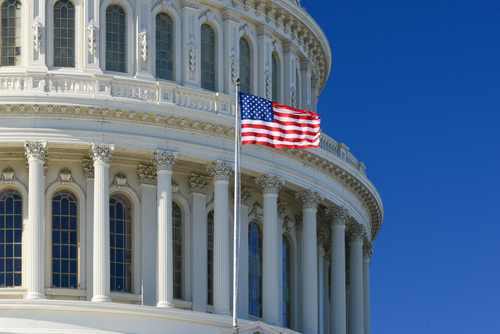
Dr. Asha George understands firsthand the threats biological agents can cause. George, who is executive director of the Blue Ribbon Study Panel on Biodefense, served in Operation Desert Storm. She knows what it’s like to be standing on the battlefield wondering whether antimicrobial resistant anthrax or some other biological agent had been loaded into a scud missile directed her way.
George, who has spent 30 years in the biodefense field, also experienced what it’s like to take a vaccine that received emergency use authorization just the week before.
“I bring that up really only because I know what it feels like to be operating in an arena under the specter of biological warfare,” George said on Wednesday before the U.S. House Committee on Oversight and Reform’s National Security Subcommittee.
She was among a panel of experts testifying about the state of U.S. preparedness for biological attacks and infectious disease pandemics. The experts agreed that a range of factors affect our country’s ability to fight these threats, including weakened or fragmented federal oversight, limited incentives for research and development, and a lack of preparedness at the local level to protect vulnerable populations.
The Blue Ribbon Study Panel on Biodefense issued its bipartisan report, A National Blueprint for Biodefense, which assessed the state of biodefense in the country looking at strengths, weaknesses and vulnerabilities.
“In short, the nation is not prepared for biological outbreaks, acts of bioterrorism, biological warfare of accidental releases with catastrophic consequences,” George said. “We are talking about catastrophic events that affect the function of our entire society.”
Among these concerns is antimicrobial resistance, one of the foremost global public health threats. Drug resistant diseases cause at least 700,000 deaths worldwide each year and could increase to 10 million deaths per year by 2050, said U.S. Rep. Stephen Lynch (D-MA), chairman of the subcommittee. He added that those were conservative projections.
“Antibiotic infections pose serious threats to our national security,” said Helen Boucher, director of the Tufts Center for Integrated Management of Antimicrobial Resistance at Tufts University. “Resistant pathogens complicate our soldiers’ combat wounds, increasing risk of limb loss and death, and compromise our military combat readiness and effectiveness.”
Between 2004-2009, more than 3,300 American soldiers in Iraq and Afghanistan became severely ill from a single resistant pathogen, Acinetobacter, which has become even more resistant to treatment over time.
From a bioterrorism perspective, the former Soviet Union successfully weaponized multidrug resistant strains of both the plague and anthrax. Studies have concluded the aerosolized release of a weaponized resistant pathogen in just a single incident of bioterrorism in the Washington, D.C. area would result in a death toll of over 3 million, Boucher said.
Antimicrobial resistance also puts our health security at risk, both in the United States and around the world. An outbreak with limited or no treatment options could overwhelm health systems, harm economies, and even destabilize countries.
The resistance can also undo decades of progress. Complicated surgeries are only effective with the support of safe antibiotics. While bacteria naturally develop resistance in nature, the use of antibiotics puts selective pressure, leading them to develop resistance even faster, Boucher said.
The opioid epidemic in the United States is also fueling antimicrobial resistance as people who inject opioids have a 16 times higher chance of contracting Methicillin-resistant Staphylococcus aureus, or MRSA.
But with rates of antimicrobial resistance increasing and fewer drugs available to treat infections, options seem to be few and far between.
“The pipelines for antibiotics have to be the answer here,” Lynch said. “How do we incentivize that on our end?”
The solution lies somewhere in fixing a market that seems to be broken and providing a return on investment for drug development, Boucher said. Taking the return on investment away from the volume of sales, a term called de-linkage, may also help.
Addressing antimicrobial resistance and other threats can only be accomplished when there is coordination among agencies at the federal level, specifically at the level of the White House, the panelists said. The Government Accountability Office reports that there are almost two dozen presidentially appointed officials who have a responsibility for biodefense. The recent Zika and Ebola outbreaks show it’s not always clear who is in charge or where funding comes from in a situation and is compounded by that it may take months for supplemental appropriations to be distributed.
There’s also the biodefense challenge at the grassroots level.
“When the 2015 Ebola crisis occurred, Georgia received a lot of these patients from West Africa,” said Cham Dallas, professor and director at the University of Georgia’s Institute for Disaster Management. “We had to ramp up pretty quickly.”
Georgia has since developed a network of 700 institutional stakeholders to respond to potential attacks and other naturally occurring pandemics that may have a substantial impact, Dallas said. Despite this coordination, there are still populations that may be severally impacted by a biodefense scenario, including nursing homes, where many residents would have to shelter in place due to complications in moving them from these units.
“We’ve designed evacuation plans for these facilities,” he said. “But the evacuation is a nightmare.”

